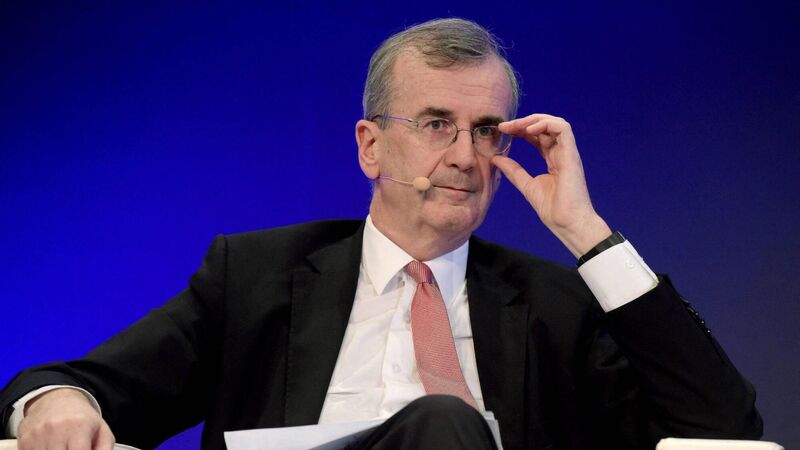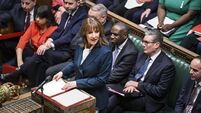ECB member confident rate cut will come in June despite eurozone wage growth

Bank of France governor Francois Villeroy de Galhau said it’s very probable that the European Central Bank (ECB) will start cutting interest rates at its June 6 meeting. Picture: Eric Piermont/AFP via Getty Images
Bank of France governor Francois Villeroy de Galhau said it’s very probable that the European Central Bank (ECB) will start cutting interest rates at its June 6 meeting.
Speaking at a conference in Paris, the French policymaker said recent data on inflation are encouraging and confirm the ECB’s pledge to bring the pace of annual price increases back to 2% durably by next year.
“We have enough confidence to start to cut rates probably very soon,” Mr Villeroy said at the Institute of International Finance summit. “The probability of a rate cut by our next meeting on June 6 is ... significant.”
His comments are in line with other rate-setters at the ECB who are aligned with starting to loosen policy at the next meeting.
Meanwhile, increases in eurozone salaries are moderating but the ECB can’t commit to a path for interest-rate cuts due to elevated uncertainty, the vice president of the regulator Luis de Guindos said.
“Wages are decelerating,” Mr Guindos said. “Some months ago wage growth was above 5% and now it’s hovering around 4%.”
The comments shed more light on the trajectory for pay gains in the 20-nation area — a key metric as ECB officials weigh how much to ease monetary policy following an initial reduction in rates next month.
Data from the region’s largest economies had suggested increases in negotiated wages failed to slow significantly in the first quarter. Some analysts even saw an acceleration, with the danger being that firms pass rising costs on to consumers, keeping inflation above 2% for longer.
Speaking after presenting the ECB’s bi-annual Financial Stability Review, Mr Guindos said salaries aren’t the only concern, also highlighting their interaction with productivity.
“Productivity is very low and that gives rise to a very important increase in unit labour costs,” he said. “This is something that’s especially sensitive for services because services are labour-intensive and the evolution of unit labour costs is going to determine an important part of the price pressures that we are going to see in the near future.”
Federal Reserve
Elsewhere, the benchmark S&P 500 and tech-heavy Nasdaq rose marginally on Thursday, setting fresh all-time highs a day after tepid inflation data bolstered hopes of interest-rate cut announcements from the US banking regulator the Federal Reserve.
All three major indexes notched record closes in the previous session after a smaller-than-expected rise in consumer inflation fuelled optimism that inflation was easing after three months of hotter numbers.
The market is back to betting on two quarter-point interest rate cuts from the Federal Reserve this year, with traders seeing a 72.6% chance of the first reduction in September, according to the CME FedWatch Tool.
“At these levels, the market needs to take a breather and needs to rest,” said Peter Cardillo, chief market economist at Spartan Capital Securities.
“So it’s very possible that maybe not today, but we are approaching a level of consolidation, somewhat of a small pullback and a sideways movement.”
Oil futures rose on Thursday bolstered by slower than expected inflation and a stabilising US job market, providing positive signs for future rate cuts.
Reporting by Bloomberg and Reuters


CONNECT WITH US TODAY
Be the first to know the latest news and updates













